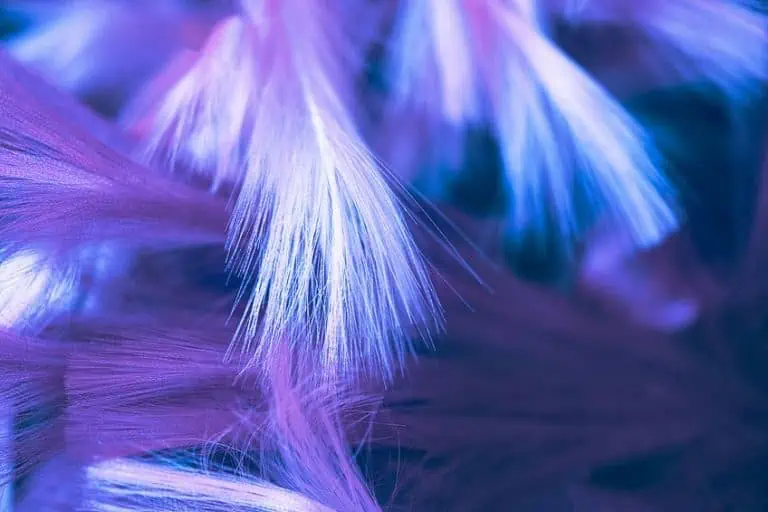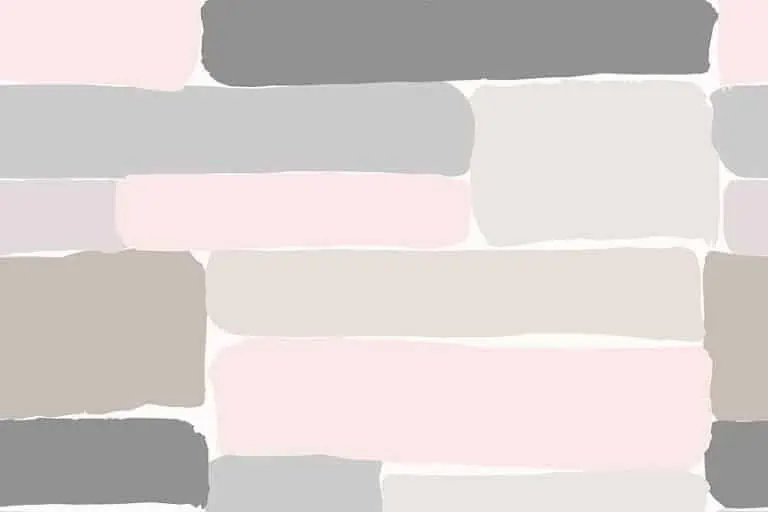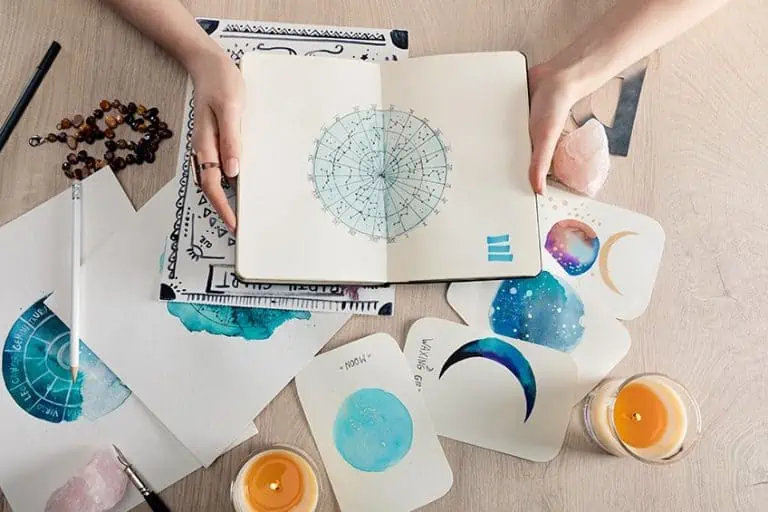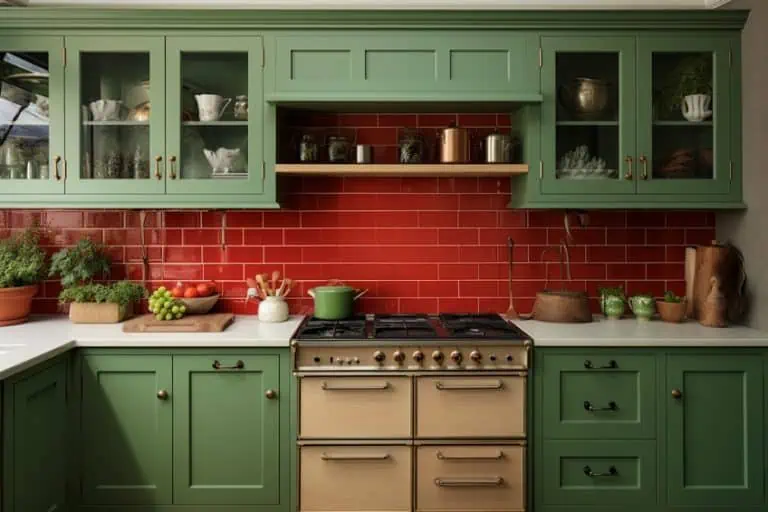What Color Does Red and Blue Make? – Creating Shades of Purple
This post may contain affiliate links. We may earn a small commission from purchases made through them, at no additional cost to you.
The world of color is fascinating, yet there is still so much to learn about color and all the scientific research surrounding it. Learning about how light affects color and how color can affect our moods is even more fascinating. We can tell how the seasons change by going outside and looking at how the colors change on the trees and fields. Color will always be part of our lives, and as we learn more about it, we greatly appreciate the science behind the scenes. In this article, we will look to answer your questions about red and blue, such as “what color does red and blue make?”. We will also look at what the effect of light is on the red and blue colors. Lastly, we will be discussing the various combinations of red and blue colors that may help you with your next painting project.
Table of Contents
The Meaning of the Color Purple
No matter what color purple you mix, it is a good idea to first understand the meaning of the color before you use it in your artwork. The purple color represents mystery, royalty, and imagination. It is deeply tied in with all things spiritual and is meant to enlighten and inspire. It is a color that stimulates courage.
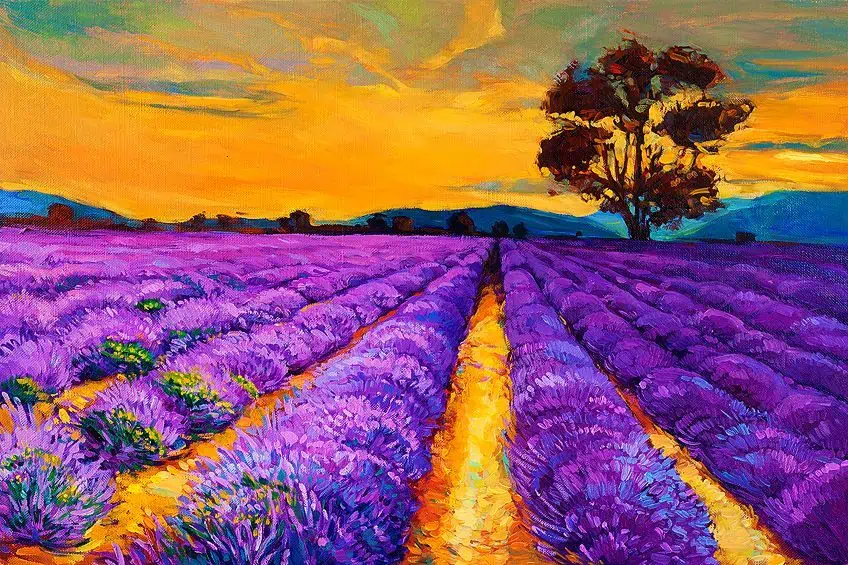
The lighter shades of purple are linked to romance and feelings of nostalgia. However, if you look at the darker shades of purple, this color is a sign of sadness and perhaps frustration. So, if you mix red and blue to make your purple color, you should consider the shade you want to add to your painting. This is because the paint will directly affect the mood of those admiring your masterpiece
What Color Do Red and Blue Make When Painting?
If you are attempting to make a purple color using ultramarine blue and mixing it with a deep red color, the combination will be more gray than purple because the red is darker and has a hint of blue. A light red color will create a much better outcome, but if you want an even lighter purple color, you can try mixing a cerulean blue, which will give you a lovely violet color.
The different names given to paint colors are generally inconsistent, and you will have to look at various reds and blues to work with, no matter what paint you want.
Taking time to test the reds and blues will go a long way to achieving the purple color you are striving for. You can also add additional colors to the purple to make it lighter or darker. Mixing reds and blues together can become a science project all on its own, and making the exact purple color will entail a bit of trial and error.
Still, we will list a few tricks that may help you when you mix red and blue to make that tremendous purple color you want to use for your next masterpiece. Some of the familiar names of red colors that you will recognize are vermillion, burgundy, and scarlet. These are just a few names because the long list seems to be never-ending!
| Shade | Hex Code | CMYK Color Code (%) | RGB Color Code | Color |
| Red | #FF0000 | 0, 100, 100, 0 | 255, 0, 0 | |
| Vermilion | #E34234 | 0, 71, 77, 11 | 227, 66, 52 | |
| Burgundy | #800020 | 0, 100, 75, 50 | 50.2, 0, 12.5 | |
| Scarlet | #FF2400 | 0, 86, 100, 0 | 255, 36, 0 |
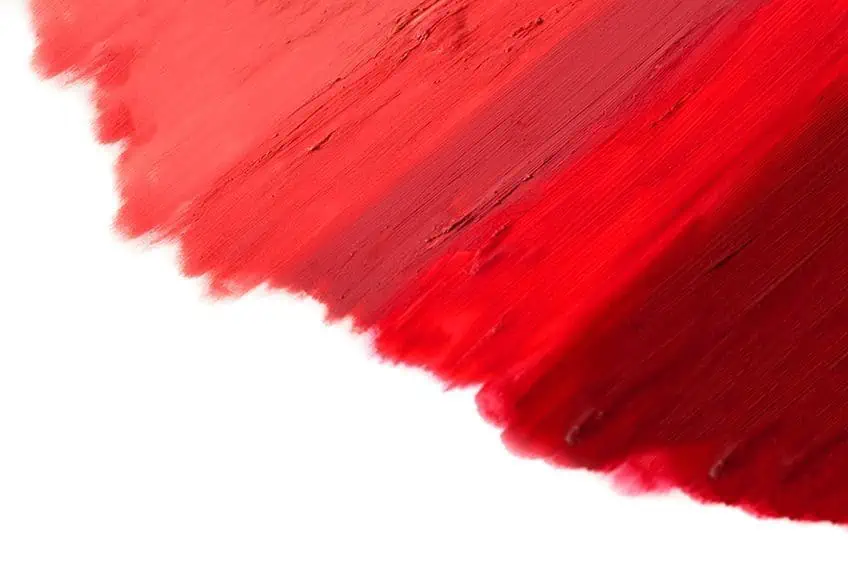
Of course, you will soon notice that when looking at blue paint options, the list is just as long as the red variants! Some of the most popular shades of blue include cobalt blue and sky blue, to name just a few!
| Shade | Hex Code | CMYK Color Code (%) | RGB Color Code | Color |
| Blue | #0000FF | 1, 1, 0, 0 | 0, 0, 255 | |
| Cobalt Blue | #0047AB | 100, 58, 0, 33 | 0, 71, 171 | |
| Navy | #000080 | 100, 100, 0, 50 | 0, 0, 128 | |
| Sky Blue | #87CEEB | 0.43, 0.12, 0, 0.08 | 135, 206, 235 |
There are so many shades and tones of red and blue in paint tubes, and the manufacturers of these paint tubes keep adding to the already long list. Still, no matter if you are working with acrylic paint, watercolors, or oils, the colors in the tubes may vary. However, as there are so many colors to choose from, your experiments will be much easier.
Achieving the Perfect Purple Color Combination
Working with different color combinations might look very simple when you read about it, but finding that perfect color can sometimes prove much more complex than what you expected. The combination of red and blue can vary. Getting to that perfect combination of purple or magenta will take much practice. Practice does make perfect, and soon you will be able to master the art of mixing other color combinations in the future.
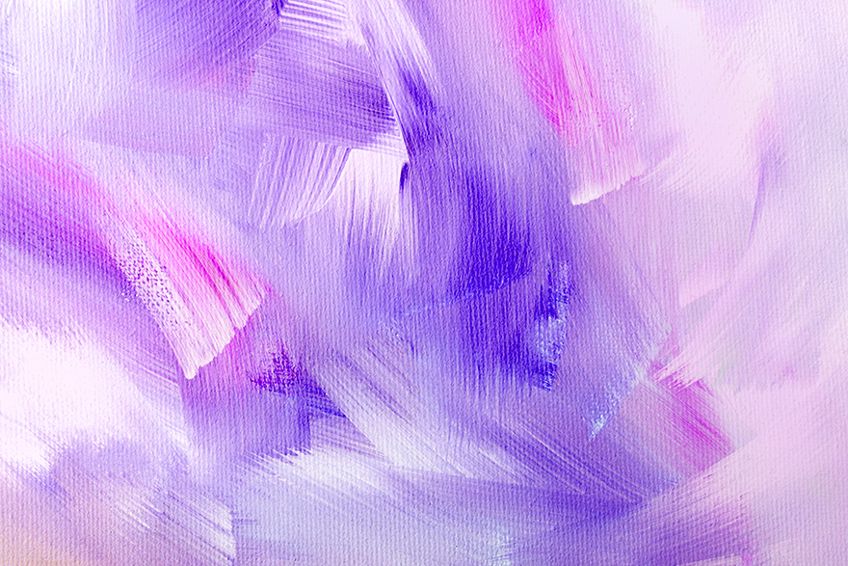
The Combination of Red and Blue
The combination of red and blue will make purple. However, many variations of blue and red are available on the market these days, and if you want to mix a random red shade with a random blue shade, you may just end up with the purple you envisioned. Granted, you may be lucky that the combination of red and blue you use will indeed be the purple color you want.
Still, it’s going to take a little more experimenting with colors to get the exact shade of purple you desire. Let’s have a look at why this is.
Why Does Mixing Red and Blue Not Always Make True Purple?
If you have used a combination of red and blue and the purple turns out to be a dull or muddy purple color, it could be that the red and blue paints contain a yellow undertone. Since the yellow color complements purple, the two combined create a brown color when mixing. Even if you add just a little yellow to the red and blue combination, it could throw your purple color right off.
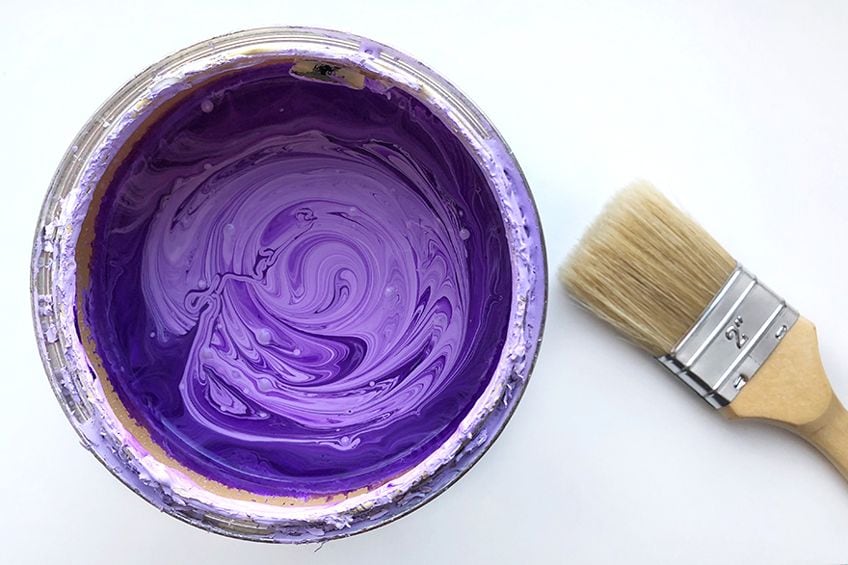
When you look at the combination of red and blue, it is recommended that you choose a paint that is pure red and pure blue without any other undertone colors mixed into them. By experimenting and incorporating a variety of reds and blues together, you may get to the purple you want. Remember that the paint type could also change the outcome when mixing paint colors. Acrylic, watercolor paints, and oil paints have different consistencies, and while some may be easy to mix, others can prove quite challenging.
Mixing Different Shades of Purple
Depending on which shades of blue and red are used, you will be able to create various purple shades. The purple color you make may be what we call a “dirty purple” or a “muddy purple”, and this may not be the purple tone you envisaged, so let’s learn how to make purple shades lighter or darker the correct way.
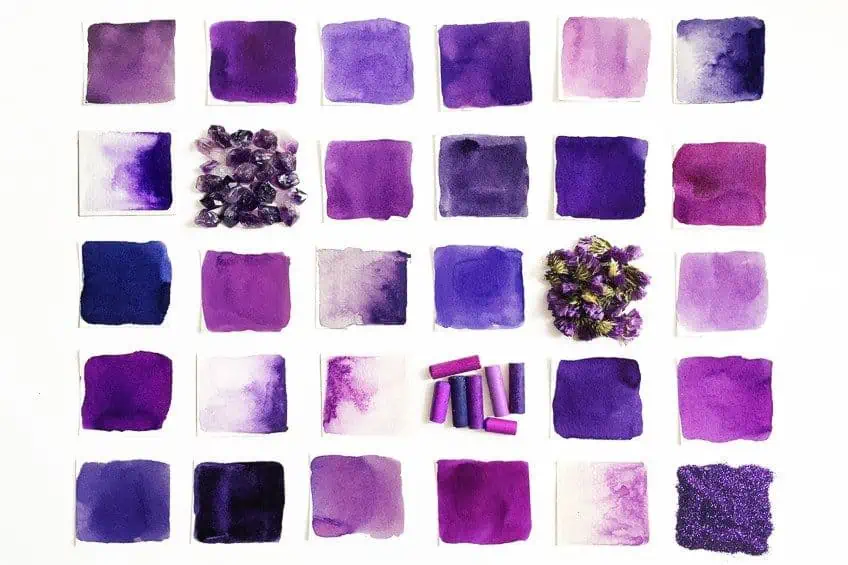
Mixing Dark Purple
To create a darker shade of purple, you would add a bit of extra blue to the mix. Incorporating a small amount of black will help but be careful when adding too much black, as it will overpower the purple color entirely and may be challenging to fix.
When carrying out the mixing experiment, always add small amounts at a time to be on the safe side.
Mixing Light Purple
The easiest way to lighten any color is by adding white. Adding white will automatically make the purple shade much lighter, and adding just a tiny amount of red afterward will make the purple appear a little warmer and softer. White is always a handy color when experimenting with color combinations, as it changes the tone of the colors without too much effort.

Purple vs. Violet vs. Indigo
You may often see the word purple and violet used interchangeably, but they are not the same color. If you look at the color wheel, the purple color is often referred to as violet. However, violet is on the electromagnetic spectrum while purple is not. To get technical, you will see that the violet color is on the lowest end of this light wavelength spectrum. In most cases, if you study the violet color, you will notice more violet than red, but purple is much closer to the perfect mixture. All three are various shades of the same color. Indigo is another purple shade that has more blue than red. Both the violet and indigo colors are listed in the rainbow, but purple is not included in the rainbow colors.
Indigo carries a much deeper color with more blue than violet.
| Shade | Hex Code | CMYK Color Code (%) | RGB Color Code | Color |
| Purple | #800080 | 0, 1, 0, 0.5 | 128, 0, 128 | |
| Violet | #EE82EE | 0, 0.45, 0, 0.07 | 238, 130, 238 | |
| Indigo | #4B0082 | 0.42, 1, 0, 0.49 | 75, 0, 130 |
Our Eyes and the Perception of Colors in Light
To learn more about the scientific nature of color, we must know how our eyes perceive colors in the light. When we look at color, we see objects give off light to create a specific color. Every color carries a particular wavelength that our eyes perceive. The cones and rods in our eyes help us see different colors. The rods take in visible light and send it to our brain, and the cones will catch the light at specific wavelengths that match the right color.

The wavelengths on the lower end of the light spectrum tend to appear redder in color. The ones on the high end of the light spectrum are closer to blue. Any color that lies in the middle is seen as green. Red, blue, and green are primary colors in light, and other light colors are a mixture. If you see a variety of blue and red together, you will see a magenta rather than a purple hue.
The Combination of Red and Blue With Lights
Astronomers use wavelengths, temperatures, and color to learn more about space, but for most humans, the spectrum of light is how we look at the world. When we study color, however, there is much more happening behind the scenes than we think. While blue and red are primary colors for lighting, the mixture of the two colors that our eyes see is different from paint mixtures.
Electromagnetic radiation will depend on the frequency of wavelengths, and the light is visible in the middle of the spectrum.
Ultraviolet and gamma rays have a much higher wavelength frequency than visible light, and infrared and microwaves have a lower frequency. What is interesting is that various temperatures also tie in very closely with light colors. When an object increases in temperature, the energy released has shorter wavelengths, making the color appear different to the human eye. The best way to describe this is if you look at a flame: you will see the different colors change from the color red to blue as it gets hotter.
Color Pigmentation
Pigments are natural colors that trap frequencies of light, and they only allow specific frequencies to bounce off objects rather than incorporating light together. This process is called subtractive color, similar to how paints and dyes are made. Chlorophyll is by far the more dominant pigment found in green plants. The chlorophyll absorbs the red and blue light causing only the green light to be reflected in the human eye.

When we thought we knew a lot about color and everything related, we now see that there is still so much more to learn. As long as we are moving, we are learning, and how wonderful it is to be alive today where we can learn so much just by experimenting. The combination of red and blue colors is fascinating because you can get to the exact color you want after a bit of manipulation. All you need is patience and time which will open up only imagined doors, and as you experiment more with color, we hope your world becomes a little brighter!
Frequently Asked Questions
What Color Does Red and Blue Make?
So, what color does red and blue make? Answering the question could be more challenging than you might think. By mixing red and blue together, you will get the color purple. However, it might just not be the color purple that you hoped for. Mixing dark blue and dark red will give you a muddy purple color. Trying to get the purple color you want will depend on what shade of red and blue you use. For instance, if you change it up and mix red and light blue, you will get to a magenta color.
What Is the Combination of Red and Blue Paint?
The combination of red and blue is purple. To get to the vibrant purple colors, start with the red and then gradually add small amounts of blue to the red. To achieve a different shade of purple, you can add white paint or even more red or blue pigment.
Duncan graduated with a diploma in Film and TV production from CityVarsity in 2018, after which he continued pursuing film while taking on a keen interest in writing along the way. Since having graduated, he began working as a freelance videographer, filming a variety of music videos, fashion and short films, adverts, weddings and more. Throughout this, he’s won a number of awards from various film festivals that are both locally and internationally recognized. However, Duncan still enjoys writing articles in between his filming ventures, appreciating the peace and clarity that comes with it.
His articles focus primarily around helping up-and-coming artists explore the basics of certain colors, how these colors can be paired with other shades, as well as what colors are created when you mix one with another. All while relating these shades to historically significant paintings that have incorporated them into their color palette. As a lover of the arts himself, he takes great interest in the Renaissance era of paintings, an era that has directly inspired many of his favorite films.
Learn more about Duncan van der Merwe and about us.


